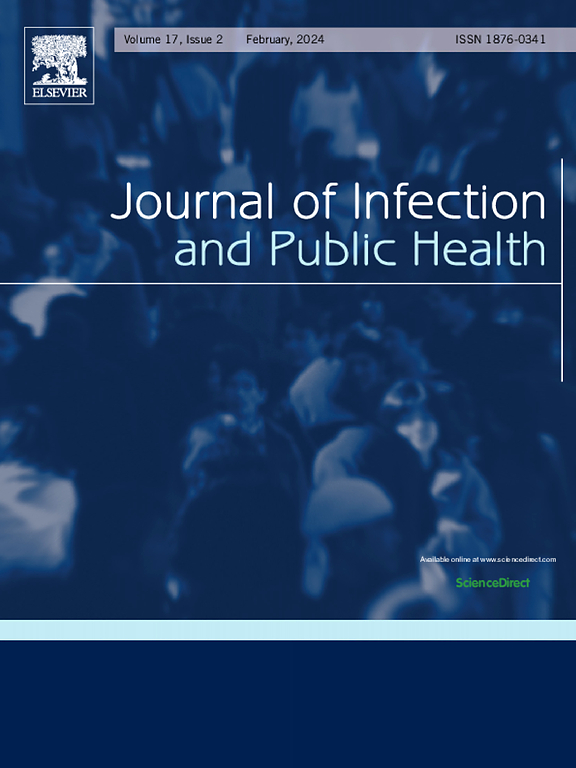孕妇阴道联合B群链球菌筛查(培养和快速PCR)对新生儿发病率和死亡率的影响
IF 4
3区 医学
Q1 INFECTIOUS DISEASES
引用次数: 0
摘要
背景:孕妇阴道内B群链球菌(GBS)的定植是新生儿早发性感染的主要危险因素,在分娩过程中通过垂直传播。目前的指南建议在妊娠晚期通过阴道拭子和培养进行普遍筛查,以预防抗生素。自2013年以来,Antoine bcl本文章由计算机程序翻译,如有差异,请以英文原文为准。
Impact of combined vaginal group B Streptococcus screening (culture and rapid PCR) in pregnant women on neonatal morbidity and mortality
Background
Vaginal colonization by group B Streptococcus (GBS) in pregnant women is a major risk factor for early-onset neonatal infection, by vertical transmission during birth. Current guidelines recommend universal screening via vaginal swab and culture in the third trimester for antibiotic prophylaxis. Since 2013, the Antoine Béclère maternity hospital has offered combined screening for GBS carriage using culture at the third trimester and PCR on vaginal swabs in the delivery room. The primary aim was to assess the added value of PCR in culture-negative or unscreened women.
Methods
This observational, retrospective, single-center study involved full-term deliveries between Jan 1, 2015, and Dec 31, 2020, in a type III perinatal unit (Clamart, France). All women at 35–38 weeks’ gestation (WG) were offered vaginal culture screening. PCR was performed in the delivery room if culture was negative or not done.
Results
15,013 patients gave birth to 15,337 newborns ≥37 WG; 14,863 women (99.0 %) were screened. Among 11,415 women with vaginal culture, 1416 (12.4 %) were positive. 3448 (23.0 %) were not screened by culture. PCR at birth identified 621 additional GBS cases (4.1 %): 327 (2.2 %) in unscreened women and 294 (1.9 %) with prior negative culture. No neonatal GBS infections were observed. There were 4 cases (0.02 %) of postpartum endometritis.
Conclusion
Intrapartum PCR identified 2.2 % additional cases in unscreened women and 1.9 % missed after prior negative culture. This rapid and effective method appears feasible for routine use.
求助全文
通过发布文献求助,成功后即可免费获取论文全文。
去求助
来源期刊

Journal of Infection and Public Health
PUBLIC, ENVIRONMENTAL & OCCUPATIONAL HEALTH -INFECTIOUS DISEASES
CiteScore
13.10
自引率
1.50%
发文量
203
审稿时长
96 days
期刊介绍:
The Journal of Infection and Public Health, first official journal of the Saudi Arabian Ministry of National Guard Health Affairs, King Saud Bin Abdulaziz University for Health Sciences and the Saudi Association for Public Health, aims to be the foremost scientific, peer-reviewed journal encompassing infection prevention and control, microbiology, infectious diseases, public health and the application of healthcare epidemiology to the evaluation of health outcomes. The point of view of the journal is that infection and public health are closely intertwined and that advances in one area will have positive consequences on the other.
The journal will be useful to all health professionals who are partners in the management of patients with communicable diseases, keeping them up to date. The journal is proud to have an international and diverse editorial board that will assist and facilitate the publication of articles that reflect a global view on infection control and public health, as well as emphasizing our focus on supporting the needs of public health practitioners.
It is our aim to improve healthcare by reducing risk of infection and related adverse outcomes by critical review, selection, and dissemination of new and relevant information in the field of infection control, public health and infectious diseases in all healthcare settings and the community.
 求助内容:
求助内容: 应助结果提醒方式:
应助结果提醒方式:


